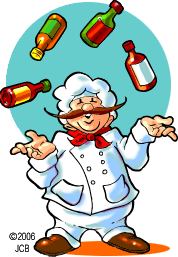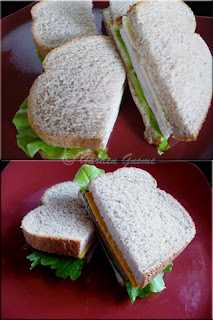If you recall one of the goodies I picked up on my foodie road trip was black cherries. My husband absolutely adores cherry jam! Cherry jam made with sour cherries is good, with sweet cherries is better but made with black cherries it is delectable!  Sink Full of Cherries
Sink Full of Cherries
Cherries grow on trees so if you are going to a U-Pick wear sturdy shoes and comfortable clothing as you may be going up and down a ladder. Cherry U-Picks will provide the ladders and baskets. You will be picking 3 to 4 feet off the ground so it's not a high distance bu still you will be picking from a ladder so do dress accordingly.
Black cherries when ripe are a deep purplish black. Even the flesh is dark compared to other berries. They have a very rich, deep, sweet flavour. The nice thing about cleaning black cherries is there isn't a lot of work to them as far as bugs go. They need to be washed and the stems removed which is a rather simple process. Once the cherries are washed and de-stemmed they need to be pitted. Cherry Pitter
Cherry Pitter
Pitting cherries can be the pits :) Seriously there are several manual cherry pitter models out there that rely on a significant amount of thumb action and they do one cherry at a time. The down side to these cherry pitters is the strain it causes to your hand. Somehow in the move I lost my beloved cherry pitter so found myself looking for a new one. I actually found a real beauty during my foodie road trip!
One of my last stops was at Home Hardware. I knew I had 11 qts of black cherries to pit, no cherry pitter in sight and the two stores I thought would have one (Dollarama, Canadian Tire) did not. By the time I hit Home Hardware I was getting despirit! Lo and behold they had a KitchenValue cherry pitter! Now this is one of the neatest manual cherry pitters I've ever seen. The cherry go into a shoot then with a quick pumping action using the palm of hand so it doesn't cause a lot of hand strain. Hand stain is a common problem with the repetitive chopping motion for preparing many foods for canning so when you find a product that eliminated this it is always a blessing! Cherry Jams
Cherry Jams
I used the entire 11 qt basket of tomatoes to make cherry jams. My husband loves cherry jam and it is the only jam he requested I make that isn't low sugar. Sugar adds not only sweetness but bulk to jams so any time you reduce the sugar you reduce a bit in terms of texture and bulk. I made black cherry jam using regular pectin (1), black cherry jam using Pomona's pectin (2, 4) and low sugar black cherry jam (3). Recipes follow.
Black Cherry Jam
source: Ball Fruit Pectin insert
4 c finely chopped black cherries
¼ c lemon juice
5 c sugar
1 box Ball fruit pectin (dry)
Prepare cherries. Measure the cherries into a large sauce pot. Stir in the pectin and add up to ½ tsp butter to reduce foaming. Bring mixture to a full boil that cannot be stirred down. Add the sugar stirring to dissolve. Remove from heat. Ladle into prepared jars ¼ - inch headspace. Wipe rims. Adjust 2 piece lids. Process 10 minutes in BWB at altitudes below 1,000 ft above sea level. At higher altitudes refer to the processing times on the altitude adjustment chart (here).
Black Cherry Jam (Pomona's)
4 c chopped cherries
5 c sugar
4 tbsp lemon juice
4 t calcium water
2 t Pomona's Universal Pectin
Combine cherries, lemon juice and calcium water in large saucepan. Mix sugar and pectin in separate bowl. Bring the cherry mixture to a boil then stir in the sugar mixture and return to a boil. Remove from heat. Ladle into prepared jars ¼ - inch headspace. Wipe rims. Adjust 2 piece lids. Process 10 minutes in BWB at altitudes below 1,000 ft above sea level. At higher altitudes refer to the processing times on the altitude adjustment chart (here).
Low Sugar Black Cherry Jam
5 c chopped cherries
5 tbsp lemon juice
2½ c granulated sugar
5 tsp calcium water
1½ tsp Pomona's Universal pectin
Combine cherries, lemon juice and calcium water in large saucepan. Mix sugar and pectin in separate bowl. Bring the cherry mixture to a boil then stir in the sugar mixture and return to a boil. Remove from heat. Ladle into prepared jars ¼ - inch headspace. Wipe rims. Adjust 2 piece lids. Process 10 minutes in BWB at altitudes below 1,000 ft above sea level. At higher altitudes refer to the processing times on the altitude adjustment chart (here).







 Blueberry Field
Blueberry Field Fresh Picked Blueberries
Fresh Picked Blueberries Blueberry Products
Blueberry Products Canning Jar Lids
Canning Jar Lids Home Canned Beans
Home Canned Beans





 Inspiration
Inspiration On the Grill
On the Grill Texas-Style Barbecued Chicken Legs
Texas-Style Barbecued Chicken Legs Salad Greens
Salad Greens Sandwiches
Sandwiches Prep & Cooking
Prep & Cooking Savory Mesquite Steak
Savory Mesquite Steak Preparations
Preparations Blueberry Pulp
Blueberry Pulp Out of the Canner
Out of the Canner Roasted Pig
Roasted Pig Baked Beans & Sides
Baked Beans & Sides Roasted Pig Dinner
Roasted Pig Dinner Kiwifruit
Kiwifruit Honey Strawberry Kiwi Jam
Honey Strawberry Kiwi Jam
 Method
Method Vegetable Stuffed Meatloaf
Vegetable Stuffed Meatloaf Dinner
Dinner Orzo
Orzo Orzo with Baked Chicken
Orzo with Baked Chicken Summer Salad
Summer Salad